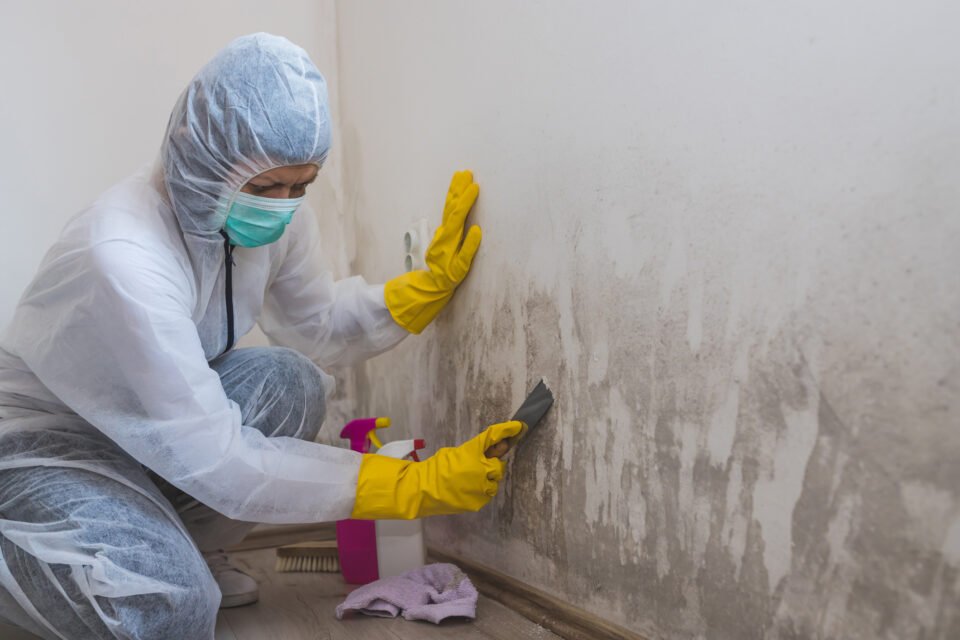Moisture control is the key to controlling mold. Use soap and water to scrub mold off hard surfaces, then let them air dry. As quickly as possible, take care of any water issues, including plumbing leaks. Every item should be fully dry.
If absorbent or porous materials, like carpet and ceiling tiles, grow mold, they might need to be thrown out. It may be difficult or impossible to eradicate the mold because it can develop on porous materials and fill in their gaps and cracks. Keep yourself and others safe from mold exposure (see the talks on Hidden Mould and What to Wear When Cleaning Mouldy Areas).
Supplies Needed: Six-mil plastic trash bags
Painter’s tape, bleach, heavy-duty cleaning, plastic sheeting, and primer with an oil or shellac base. A major league annoyance is a mold. It discolors walls, darkens decks, darkens shower grout lines, grows on and rots damp wood everywhere, and appears as black spots on the siding. It might even be detrimental to your health.
Specialized N-95 or P-100 respirators together with gloves and goggles.
- To ventilate the room while working, place an inexpensive new box fan or an old one in a window. After cleaning, dispose of it because the spores are nearly impossible to remove. Cover the window apertures with cardboard or plywood tape to prevent spores from blowing back in.
- To dispose of mold-infested waste, double-bag the affected areas in garbage bags and wrap and tape the moldy carpets with 6-mm plastic.
- Use a garden sprayer to mist moldy areas while you work to prevent spores from flying around.
- To keep spores contained, turn off your air conditioner and furnace and cover doors and vents.
- When vacuuming, keep your wet/dry vacuum outside.
The Mould Remediation Process
According to the Environmental Protection Agency (EPA), a homeowner can remedy moldy areas less than 10 square feet or around 3 feet by 3 feet.4 you should speak with a mold removal contractor after that. A mold remediation contractor is usually better than a general contractor for this type of job.
Although bleach containing chlorine is frequently used to eradicate mold, bleach is not an EPA-approved biocide.5. You’ll need to utilize something like Mould Stat. Mold should be confined to prevent spreading if it is in a highly concentrated area or close to the HVAC system and measures three feet by three feet.
Airflow and Restrictions
The first and most crucial step is to set up ventilation and containment. It is necessary to employ appropriate ventilation and air filtration devices (AFDs), including air scrubbers, to ensure that airborne disturbed mold spores do not travel to an uninfected region.
Sanitizing and disinfecting
The actual remediation and disposal of contaminated materials take place during the following steps: cleaning and disinfection. The professionals use biocide, fungicide, and moldicide solutions after cleaning and disinfection.
Resolve the Mould Origin
The specialists take care of any issues with moisture or humidity in the following phase. For instance, the fan duct may be mended if it is loose and extends into the attic from the bathroom. The mold remediation business may handle the repair independently if it is a simple remedy. The business might recommend or employ a subcontractor for the homeowner in the event of more complex repairs.
Encapsulate the Mould
Paint or comparable material can encase mold that still needs to be removed. When most of the mold has been removed and the affected area is completely dry, encapsulation is an approved approach for treating mold in a home. Painting or caulking should be done after addressing the mold’s origin. It is not authorized to practice encapsulating wet active mold sources.


